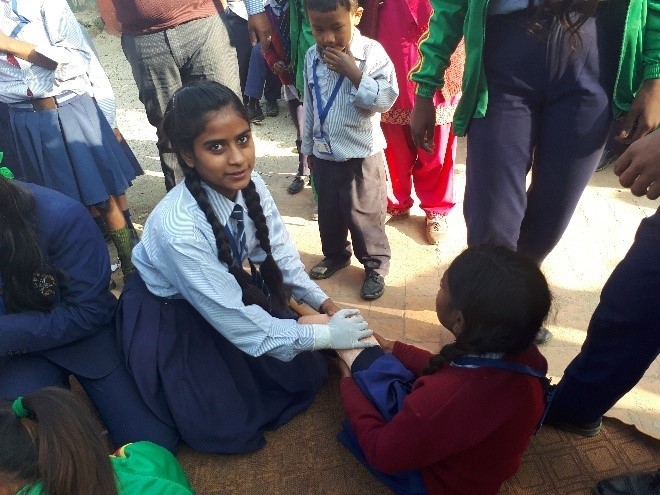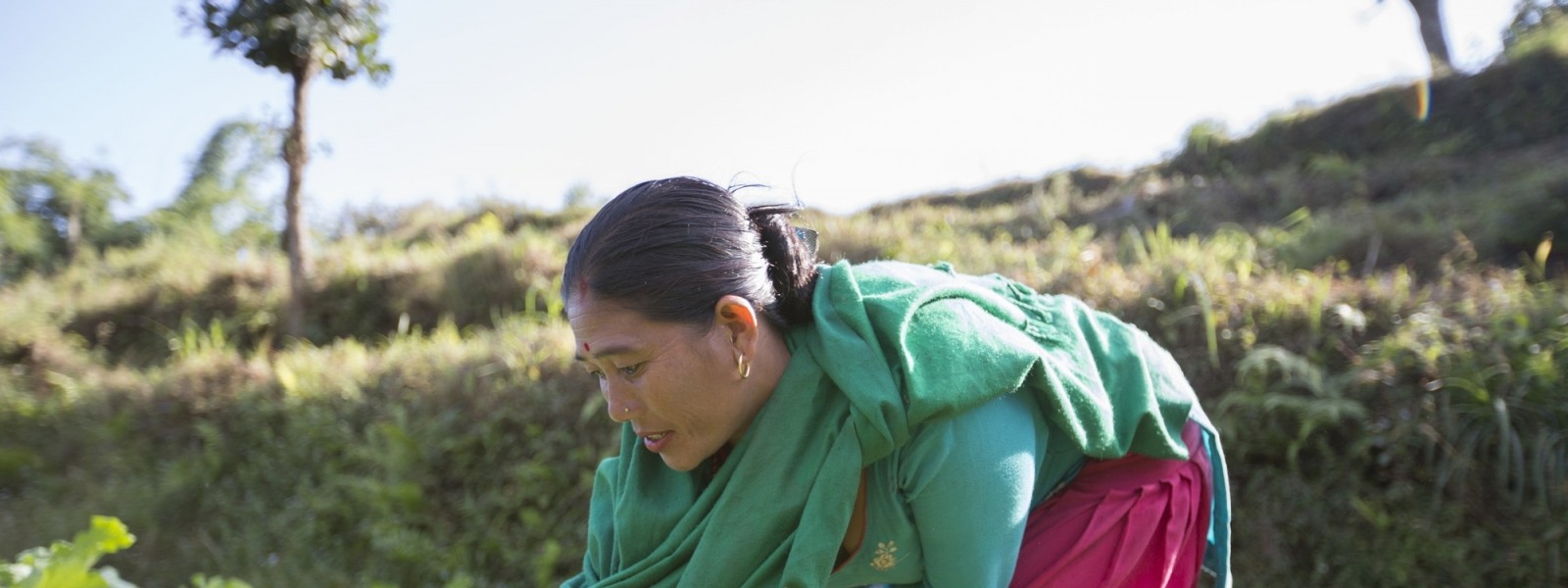In the wake of the 2015 earthquake that devastated Nepal, Lutheran World Relief launched a three-year emergency response focusing on affected communities’ food security, shelter and livelihoods.
Today, we continue to work with vulnerable communities in Nepal to assist with their recovery, while also helping them to prepare for the next disaster. Much of our disaster-preparedness work is in the capital city of Kathmandu, but we are also assisting the earthquake-afflicted Gorkha district.

Practicing first aid at a disaster simulation.
In Kathmandu Valley, rapid urbanization fueled by migration from outlying areas is creating a risk of high casualties in the event of a disaster. Lutheran World Relief is helping communities in Kathmandu to analyze specific risks posed by potential disasters, such as fires or earthquakes, in urban contexts. These communities are receiving toolkits with supplies that will help them to respond before, during and after a disaster, as well as undertaking disaster simulations to demonstrate possible scenarios.
Amir Maharjan, who was elected to lead the disaster management committee in his community of Lalitpur, recognizes the challenges in his own neighborhood. “We are very congested and people are living in old houses,” he says, adding that there are many poorly maintained electric lines and transformers. “The roads are very narrow, barely wide enough for an ambulance or fire brigade to pass through if we have fire.”
He called the disaster risk planning workshop he attended as part of LWR’s work “a milestone” for his community. “This workshop helped us to understand more about the flow of hazard, risk, disaster and vulnerability, their types and ranking, and planning and management,” he says.
Practicing a bucket brigade to fight fire.
In the Gorkha District, one of the hardest-hit areas by the earth quake, Lutheran World Relief helping communities to create livelihood opportunities that will bring much-needed income to earthquake-affected families, while also helping them with disaster preparedness.
The livelihood component focuses on helping farmers to cultivate seasonal and off-season vegetables, as well as the production of citrus and cardamom production and processing. Farmers received vegetable and maize seeds along with technical training that has helped them to increase the quantity and quality of their bounty. A number of farmers also received beehives along with training in beekeeping.
The project has also rehabilitated systems for drinking water and promote awareness of proper hygiene and sanitation.
A third component of our work includes disaster risk reduction. We have helped communities form local Disaster Management Committees with updated disaster management plans. Training in disaster preparedness raised community awareness about risks and hazards and build their capacity to prepare for, respond to and recovery from a disaster.
Farmers receive potato seed in Jaubari, Gorkha district.


